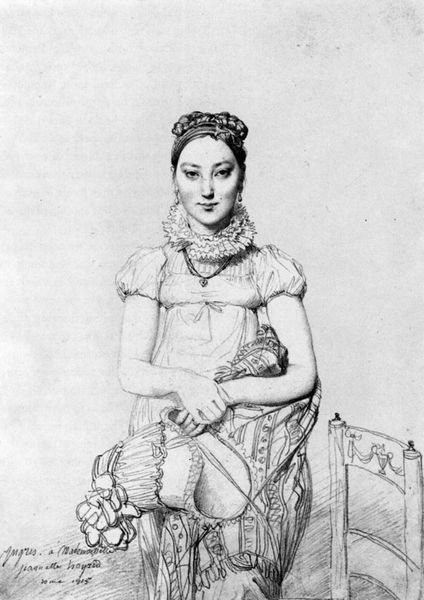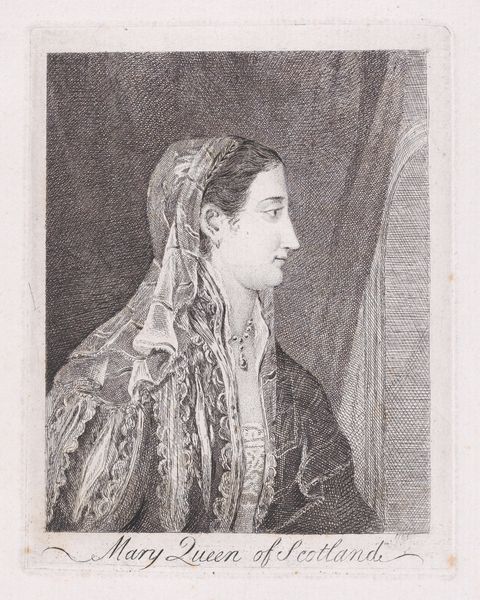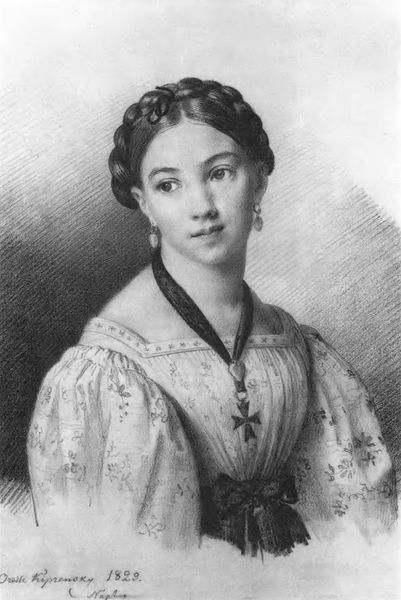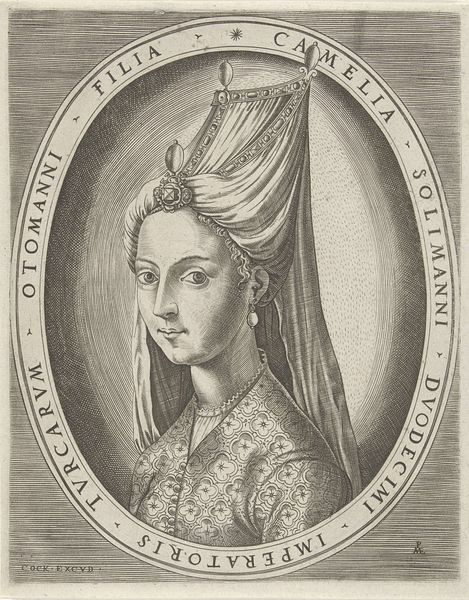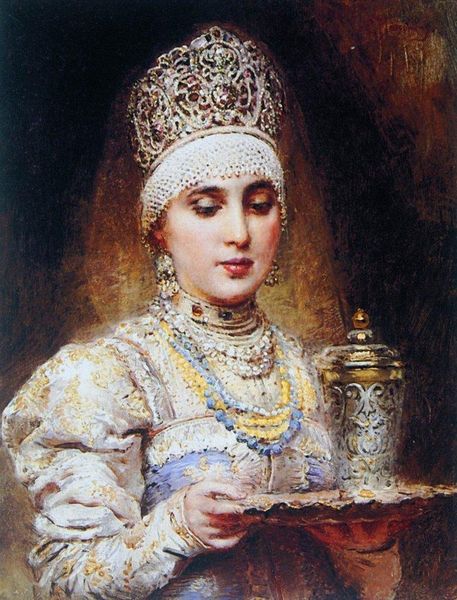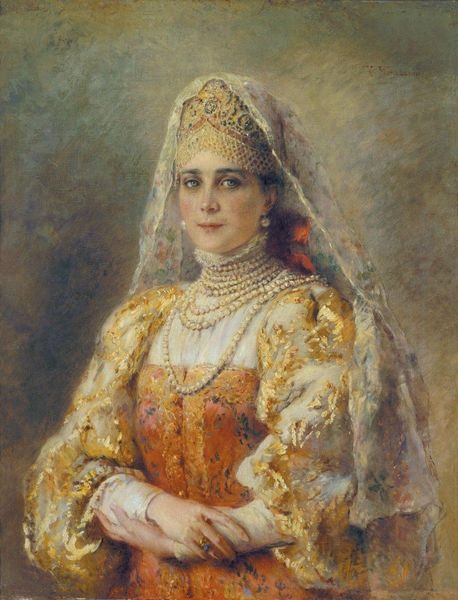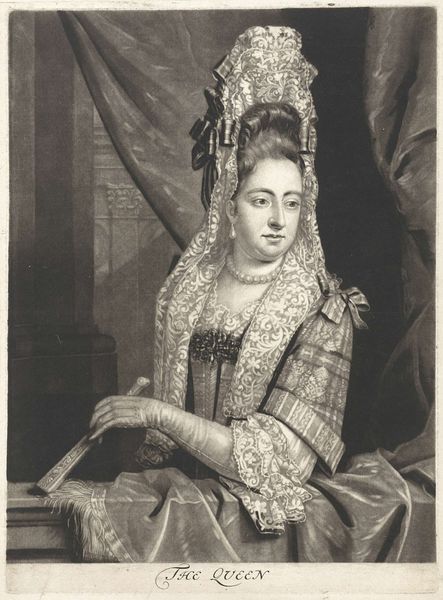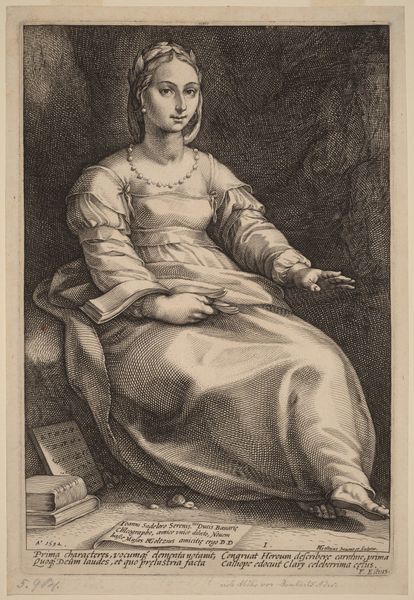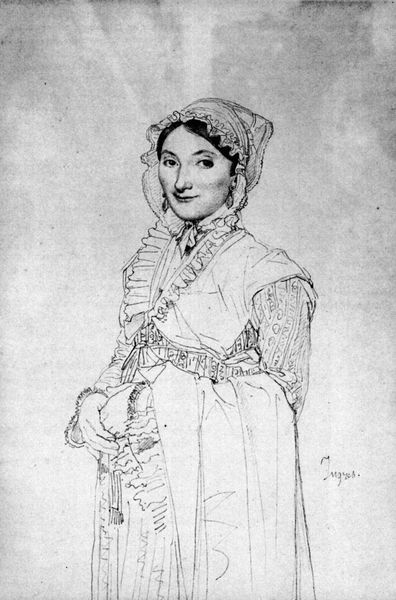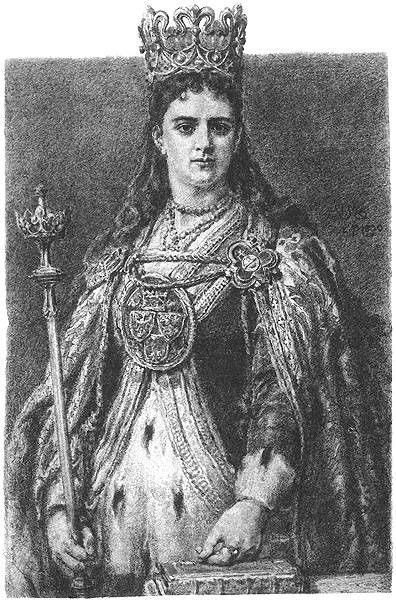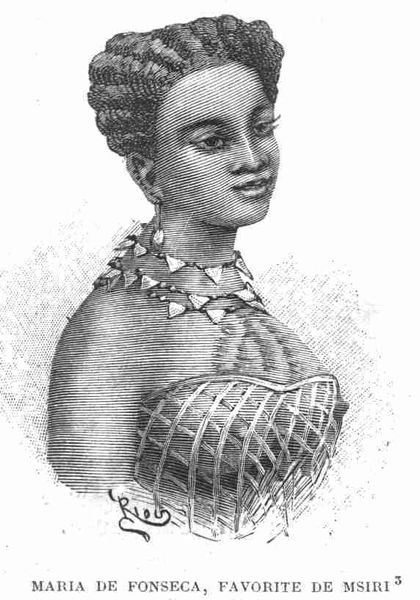
#
pencil drawn
#
facial expression drawing
#
pencil sketch
#
charcoal drawing
#
charcoal art
#
portrait reference
#
pencil drawing
#
portrait drawing
#
facial study
#
digital portrait
Copyright: Public domain
Curator: Look at the luminosity Johann Baptist Clarot captured in this portrait of Anna Maria Wilhelmine van Hasselt-Barth, created in 1842. Editor: It's an intriguing composition; the overall impression is one of subtle constraint, almost as if she is consciously embodying a particular societal role. Curator: It's rendered in pencil and charcoal, which adds to its delicate, almost ethereal quality. Knowing that Anna Maria was a celebrated opera singer adds another layer. It brings to mind questions about the representation of women in the performing arts of the time. Editor: Yes, the jewelry acts as visible status symbols, drawing the viewer into an expected image, but also something holds the image back. Note how the veil softly obscures more than it reveals; what is the power that she yields? Curator: The veil and elaborate jewels were certainly deliberate choices, visual codes communicating wealth and status in a very specific cultural moment. Consider the societal pressure placed on women. Their representation had a very strong relation to maintaining a family’s image, the male-controlled economics of a household. Editor: Precisely! Even the slightly cool, reserved expression seems intentionally crafted, her fingers delicately framing her face draw the eye to what she is trying to express, a hidden part. I read her posture almost as an archetype of cultivated feminine poise but something slightly withdrawn, what unspoken histories rest within? Curator: It invites us to consider the nuances of representation and the artist's agency, along with the power dynamics inherent in portraiture. Editor: Exactly. This isn't merely a pretty picture, it is about understanding power dynamics in an extremely specific historical, and thus symbolic context. Curator: And that helps us question some of the stereotypes imposed upon women even in such apparently respectful images. Editor: Indeed, a quiet yet insistent invitation to reimagine her world, as we view her now.
Comments
No comments
Be the first to comment and join the conversation on the ultimate creative platform.
